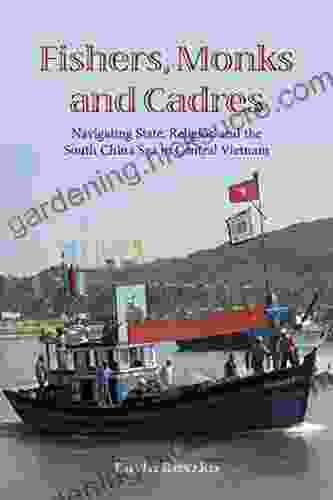Unveiling the Art Industry and Infrastructure of Pompeii: A Historical Exploration

Nestled along the scenic Bay of Naples, the ancient Roman city of Pompeii has captivated the world with its remarkably preserved ruins. Beyond its awe-inspiring architecture lies a rich artistic heritage that reveals the flourishing art industry and sophisticated infrastructure that underpinned the daily life of its inhabitants.
The Thriving Art Industry of Pompeii
Pompeii emerged as a hub for artistic production, boasting an array of craftsmen and artisans who catered to the discerning tastes of the city's elite. Excavations have unearthed an abundance of exquisite frescoes, mosaics, and sculptures that adorned the walls and floors of private homes and public spaces.
5 out of 5
| Language | : | English |
| File size | : | 16669 KB |
| Text-to-Speech | : | Enabled |
| Screen Reader | : | Supported |
| Enhanced typesetting | : | Enabled |
| Print length | : | 200 pages |
Frescoes: Vibrant Narratives on Walls
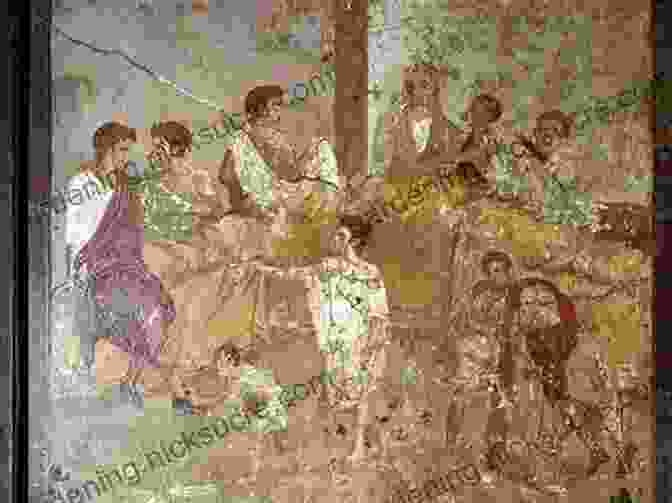
Frescoes were an integral part of Pompeian art, adorning the walls of buildings with lively scenes depicting mythological tales, everyday life, and landscapes. The Fourth Style of Pompeian painting, characterized by intricate architectural elements and illusionistic effects, reached its peak during the final decades before the city's destruction.
Mosaics: Colorful Floors and Intricate Designs
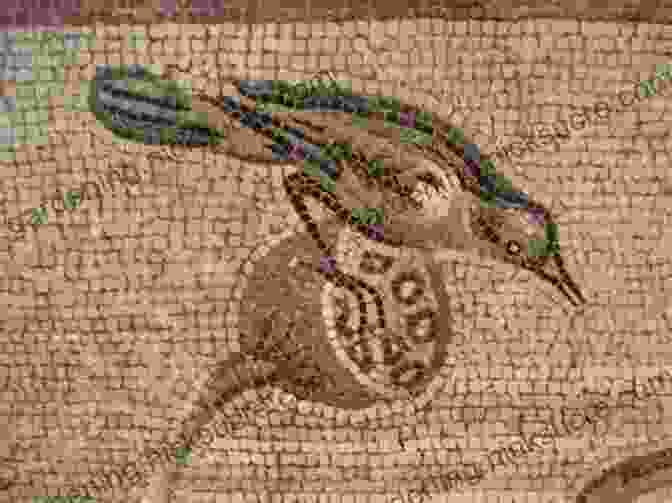
Mosaics formed an equally impressive aspect of Pompeian art. Made from small pieces of colored glass or stone, these intricate patterns graced the floors of public baths, private villas, and temples. Geometric designs, floral motifs, and depictions of mythological creatures often adorned these mosaic masterpieces.
Sculptures: Immortalizing Gods and Mortals
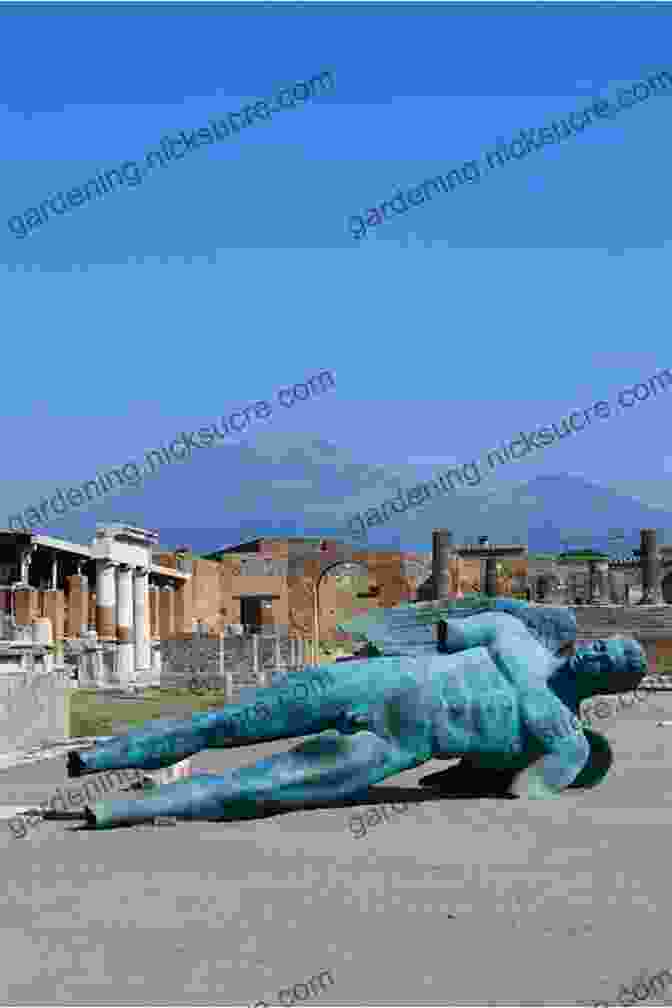
Pompeiians took great pride in their sculptural works, crafting statues and busts that celebrated gods, heroes, and prominent citizens. These sculptures, often rendered in bronze or marble, captured the essence of human form and emotion, demonstrating the skill and artistry of local craftsmen.
Infrastructure Supporting the Art Industry
The flourishing art industry in Pompeii was made possible by a well-developed infrastructure that provided the necessary resources and materials.
Pigment Production: Essential for Colorful Art
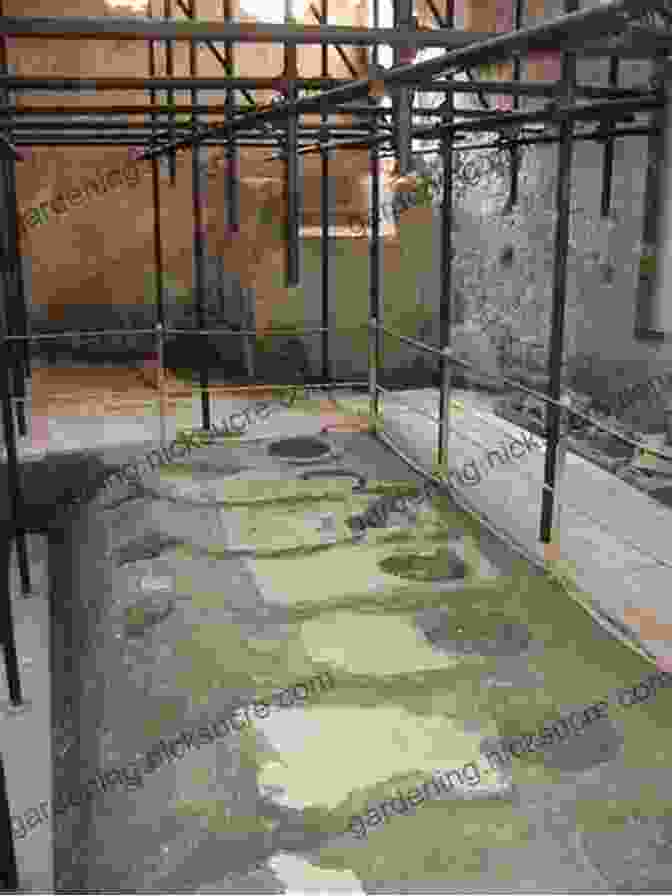
Pigment production was crucial for creating the vibrant colors seen in Pompeian art. Excavations have revealed workshops where skilled artisans transformed natural minerals and plant materials into pigments used in frescoes, mosaics, and ceramics.
Marble Quarrying: Providing Raw Materials

The nearby Mount Vesuvius provided a rich source of marble, which was extensively used in sculptures and architectural elements. The quarries were located just a few kilometers from the city, enabling easy access to this valuable material.
Mosaic Factories: Mass-Producing Decorative Floors

Specialized mosaic factories operated in Pompeii, catering to the high demand for these decorative floor coverings. Skilled workers assembled mosaics using standardized techniques, ensuring the production of large quantities of high-quality artworks.
Art's Influence on Pompeian Society
The art industry and infrastructure of Pompeii played a pivotal role in shaping the daily lives of its inhabitants. Art was not merely a decoration but an integral part of their social and cultural fabric.
Artistic Patronage: Supporting Local Craftsmen
Wealthy citizens and government officials commissioned artworks from local artisans, fostering a mutually beneficial relationship between patrons and artists. This patronage provided employment for skilled craftsmen and contributed to the economic prosperity of the city.
Public Art: Enhancing Civic Spaces
Art extended beyond private homes, gracing public spaces such as the forum, temples, and baths. Frescoes, mosaics, and statues adorned these civic areas, creating an inspiring and aesthetically pleasing environment for public gatherings and religious ceremonies.
Religious Expression: Depicting Divine Figures
Art also played a significant role in religious practices in Pompeii. Temples and shrines were decorated with frescoes and sculptures depicting deities and mythological scenes. These artistic representations served to honor the gods and connect worshippers with the divine realm.
Pompeii's Art Legacy: A Timeless Inspiration
The destruction of Pompeii in 79 AD preserved a snapshot of a thriving art industry and infrastructure. The exquisite artworks and well-developed infrastructure unearthed from the ruins continue to captivate and inspire artists, historians, and visitors alike.
Modern Adaptations: Drawing Inspiration from Pompeii
Pompeian art has had a profound influence on subsequent artistic movements. Renaissance and Baroque artists studied Pompeian frescoes and architectural elements, while modern designers and architects have incorporated Pompeian motifs into their work.
Preservation and Conservation: Protecting Pompeii's Heritage
Recognizing the exceptional value of Pompeii's art and infrastructure, ongoing efforts are underway to preserve and conserve these precious remains. Archeological research, restoration projects, and educational initiatives ensure that Pompeii's art legacy will continue to inspire future generations.
The art industry and infrastructure of Pompeii offer a fascinating glimpse into the cultural and economic life of an ancient Roman city. From vibrant frescoes and intricate mosaics to skilled craftsmen and marble quarries, Pompeii's art scene flourished through a well-developed infrastructure that supported its thriving artistic community. The legacy of Pompeii's art lives on today, inspiring and educating people around the world.
5 out of 5
| Language | : | English |
| File size | : | 16669 KB |
| Text-to-Speech | : | Enabled |
| Screen Reader | : | Supported |
| Enhanced typesetting | : | Enabled |
| Print length | : | 200 pages |
Do you want to contribute by writing guest posts on this blog?
Please contact us and send us a resume of previous articles that you have written.
 Fiction
Fiction Non Fiction
Non Fiction Romance
Romance Mystery
Mystery Thriller
Thriller SciFi
SciFi Fantasy
Fantasy Horror
Horror Biography
Biography Selfhelp
Selfhelp Business
Business History
History Classics
Classics Poetry
Poetry Childrens
Childrens Young Adult
Young Adult Educational
Educational Cooking
Cooking Travel
Travel Lifestyle
Lifestyle Spirituality
Spirituality Health
Health Fitness
Fitness Technology
Technology Science
Science Arts
Arts Crafts
Crafts DIY
DIY Gardening
Gardening Petcare
Petcare Ellen Levitt
Ellen Levitt Justin Doyle
Justin Doyle Liesbet Collaert
Liesbet Collaert Raymond Buckland
Raymond Buckland Natasha Preston
Natasha Preston Barnett Rich
Barnett Rich 6th Edition Kindle Edition
6th Edition Kindle Edition Neal Bascomb
Neal Bascomb Emma Dalton
Emma Dalton Theodor W Adorno
Theodor W Adorno Elizabeth Wenk
Elizabeth Wenk John Iceland
John Iceland Bruno Latour
Bruno Latour Jack M Bloom
Jack M Bloom Allan Mundsack
Allan Mundsack Dave Gerr
Dave Gerr Tasha Dunn
Tasha Dunn Nathan Jendrick
Nathan Jendrick Patricia S Potter Efron
Patricia S Potter Efron Dan Blackburn
Dan Blackburn Dalai Lama
Dalai Lama Jasper Godwin Ridley
Jasper Godwin Ridley Skye Genaro
Skye Genaro J Morgan Mcgrady
J Morgan Mcgrady Gregory J Privitera
Gregory J Privitera Bruce Watson
Bruce Watson Carol Stock Kranowitz
Carol Stock Kranowitz Roselyn Teukolsky
Roselyn Teukolsky Whit Honea
Whit Honea Jamaica Stevens
Jamaica Stevens Louis Liebenberg
Louis Liebenberg Jason Miller
Jason Miller Jong Chul Ye
Jong Chul Ye 2012th Edition Kindle Edition
2012th Edition Kindle Edition Stefan Hofer
Stefan Hofer Marty Bartholomew
Marty Bartholomew George Pendle
George Pendle Dominik Hartmann
Dominik Hartmann Evan Brashier
Evan Brashier Charles Seife
Charles Seife David Beaupre
David Beaupre Al Ford
Al Ford 1st Edition Kindle Edition
1st Edition Kindle Edition Brennan Barnard
Brennan Barnard Keith Siragusa
Keith Siragusa 50minutos Es
50minutos Es Barbara Klein
Barbara Klein Miranda Castro
Miranda Castro Steven D Levitt
Steven D Levitt Theris A Touhy
Theris A Touhy David Simkins
David Simkins Alec Crawford
Alec Crawford Lenora Ucko
Lenora Ucko Louis Stanislaw
Louis Stanislaw Emily A Duncan
Emily A Duncan 3rd Ed Edition Kindle Edition
3rd Ed Edition Kindle Edition Steve Magness
Steve Magness Heather Job
Heather Job Bookrags Com
Bookrags Com Lareina Rule
Lareina Rule 4th Edition Kindle Edition
4th Edition Kindle Edition Maureen Johnson
Maureen Johnson Syougo Kinugasa
Syougo Kinugasa Paul Martin
Paul Martin Jonathan Ross
Jonathan Ross William A Dembski
William A Dembski Lesli Richards
Lesli Richards Kristine Setting Clark
Kristine Setting Clark Mimi Lemay
Mimi Lemay Nick Winkelman
Nick Winkelman Jacqueeia Ferguson
Jacqueeia Ferguson Peter Cossins
Peter Cossins Dr Katayune Kaeni
Dr Katayune Kaeni 3rd Edition Kindle Edition
3rd Edition Kindle Edition Pat Dorsey
Pat Dorsey J Michael Leger
J Michael Leger Peter Dewhurst
Peter Dewhurst Christopher Lakeman
Christopher Lakeman Susan E Cayleff
Susan E Cayleff A R Bernard
A R Bernard Heather Demetrios
Heather Demetrios Terence Grieder
Terence Grieder Greta Solomon
Greta Solomon Tok Hui Yeap Rd Csp Ld
Tok Hui Yeap Rd Csp Ld Stephen P Anderson
Stephen P Anderson Joe Chilson
Joe Chilson Tim R Wolf
Tim R Wolf Martin Mobraten
Martin Mobraten Michael Romano
Michael Romano Jordan Ifueko
Jordan Ifueko James Mcnicholas
James Mcnicholas Stewart Smith
Stewart Smith Fata Ariu Levi
Fata Ariu Levi Kennedy Achille
Kennedy Achille Lin Pardey
Lin Pardey L Ulloque
L Ulloque Gayle Jervis
Gayle Jervis Mike Tyson
Mike Tyson Tony Hernandez Pumarejo
Tony Hernandez Pumarejo Bernard Rosner
Bernard Rosner Elizabeth Bradfield
Elizabeth Bradfield Katie M John
Katie M John Robert Pondiscio
Robert Pondiscio Nikki Grimes
Nikki Grimes Kerri Maniscalco
Kerri Maniscalco Eric I Karchmer
Eric I Karchmer Kerry Fraser
Kerry Fraser James Diego Vigil
James Diego Vigil Peter Wohlleben
Peter Wohlleben Ziemowit Wojciechowski
Ziemowit Wojciechowski Edward Rosenfeld
Edward Rosenfeld Laura Bright
Laura Bright Nadav Snir
Nadav Snir Eva Feder Kittay
Eva Feder Kittay Eloise Jarvis Mcgraw
Eloise Jarvis Mcgraw Seymour Simon
Seymour Simon Gail Craswell
Gail Craswell Edyta Roszko
Edyta Roszko Thomas R Baechle
Thomas R Baechle 5th Edition Kindle Edition
5th Edition Kindle Edition Richard Bromfield
Richard Bromfield Sam Irwin
Sam Irwin Oliver Theobald
Oliver Theobald 1st Ed 2016 Edition Kindle Edition
1st Ed 2016 Edition Kindle Edition Robert Thurston
Robert Thurston Andrew Shapland
Andrew Shapland Andrea Wulf
Andrea Wulf Meik Wiking
Meik Wiking Monte Burch
Monte Burch Kevin Paul
Kevin Paul Leigh Calvez
Leigh Calvez Bree Moore
Bree Moore Lucas Whitecotton
Lucas Whitecotton Emma Lord
Emma Lord Patrick Viafore
Patrick Viafore Elaine Beaumont
Elaine Beaumont Michael Alvear
Michael Alvear Temple Grandin
Temple Grandin Collins Gcse
Collins Gcse Jd Brown
Jd Brown Joe Oliver
Joe Oliver Chris Dietzel
Chris Dietzel Patrick Hunt
Patrick Hunt Kristen Riecke
Kristen Riecke Sarah Templeton
Sarah Templeton Starley Talbott
Starley Talbott Margaret Littman
Margaret Littman Janet Sasson Edgette
Janet Sasson Edgette Gary S Thorpe
Gary S Thorpe Deepak Chopra
Deepak Chopra Mark Brazil
Mark Brazil Miko Flohr
Miko Flohr Eric Haseltine
Eric Haseltine Suzie Cooney
Suzie Cooney Bob Welch
Bob Welch Robert S Mueller
Robert S Mueller Tyler Vanderweele
Tyler Vanderweele Tom Lyons
Tom Lyons Bryan Smith
Bryan Smith Michael Geheran
Michael Geheran Edward Frenkel
Edward Frenkel Nnedi Okorafor
Nnedi Okorafor Andrew Maraniss
Andrew Maraniss Cindy Kennedy
Cindy Kennedy Jo Frost
Jo Frost Daphne Adler
Daphne Adler Lois Duncan
Lois Duncan Janetti Marotta
Janetti Marotta Josh Mulvihill
Josh Mulvihill Roger Gordon
Roger Gordon Tracy Gharbo
Tracy Gharbo Laurie Forest
Laurie Forest Don Fink
Don Fink Leslie Leyland Fields
Leslie Leyland Fields Kelly Slater
Kelly Slater Sherry Monahan
Sherry Monahan Paul Deepan
Paul Deepan Jeff Gill
Jeff Gill Dinokids Press
Dinokids Press Naomi Feil
Naomi Feil Leonardo Trasande
Leonardo Trasande Apsley Cherry Garrard
Apsley Cherry Garrard Nate G Hilger
Nate G Hilger Natalie Smith
Natalie Smith Jeffrey A Greene
Jeffrey A Greene Chris I Naylor
Chris I Naylor Ellen Sue Turner
Ellen Sue Turner Kelly Skeen
Kelly Skeen Mohamed Elgendy
Mohamed Elgendy David Lloyd Kilmer
David Lloyd Kilmer Donna M Mertens
Donna M Mertens Patricia Moore Pastides
Patricia Moore Pastides L S Boos
L S Boos Greg Midland
Greg Midland Jay Cassell
Jay Cassell Debra Barnes
Debra Barnes Kristi K Hoffman
Kristi K Hoffman Joe Cuhaj
Joe Cuhaj Eli Boschetto
Eli Boschetto Dan Wingreen
Dan Wingreen Diane Duane
Diane Duane Freda Mcmanus
Freda Mcmanus Chris Froome
Chris Froome Amy Chua
Amy Chua Kekla Magoon
Kekla Magoon Betty Crocker
Betty Crocker Heather Rain Mazen Korbmacher
Heather Rain Mazen Korbmacher Elizabeth D Hutchison
Elizabeth D Hutchison Aly Madhavji
Aly Madhavji John Coleman
John Coleman Erika Bornman
Erika Bornman Cassandra Johnson
Cassandra Johnson Duy Tran
Duy Tran Brian Thompson
Brian Thompson Subsequent Edition Kindle Edition
Subsequent Edition Kindle Edition Olszewski Marie Erin
Olszewski Marie Erin Karl Morris
Karl Morris Christy Jordan
Christy Jordan Joseph E Garland
Joseph E Garland Max Domi
Max Domi Muata Ashby
Muata Ashby 1st English Ed Edition Kindle Edition
1st English Ed Edition Kindle Edition Simon G Thompson
Simon G Thompson Thomas Wentworth Higginson
Thomas Wentworth Higginson Mei Fong
Mei Fong Michaela Stith
Michaela Stith J D Salinger
J D Salinger Anthony Arvanitakis
Anthony Arvanitakis Porter Fox
Porter Fox Bill Reif
Bill Reif Dan Falk
Dan Falk Robert Venditti
Robert Venditti 2005th Edition Kindle Edition
2005th Edition Kindle Edition John Gookin
John Gookin Harry Middleton
Harry Middleton Filipe Masetti Leite
Filipe Masetti Leite Claudio De Castro
Claudio De Castro Mary H K Choi
Mary H K Choi Amy Ogle
Amy Ogle G I Gurdjieff
G I Gurdjieff 8th Edition Kindle Edition
8th Edition Kindle Edition Adam Silvera
Adam Silvera Sam Goulden
Sam Goulden Brooklyn James
Brooklyn James Robert Mcentarffer
Robert Mcentarffer Claire Baker
Claire Baker Mitch Rubman
Mitch Rubman Robert Bauval
Robert Bauval Dervla Murphy
Dervla Murphy Wong Kiew Kit
Wong Kiew Kit A Christine Harris
A Christine Harris Bernard Cornwell
Bernard Cornwell Tami Lynn Kent
Tami Lynn Kent Jenifer Fox
Jenifer Fox David Kushner
David Kushner Alan Jacobs
Alan Jacobs Eric Dominy
Eric Dominy Juno Dawson
Juno Dawson Jon Dunn
Jon Dunn Justine Brooks Froelker
Justine Brooks Froelker Kyla Stone
Kyla Stone Sandra Mizumoto Posey
Sandra Mizumoto Posey Broccoli Lion
Broccoli Lion Linda A Roussel
Linda A Roussel Justin Hammond
Justin Hammond Gershon Ben Keren
Gershon Ben Keren Christoph Delp
Christoph Delp Jessica Shortall
Jessica Shortall Jamie Hand
Jamie Hand Riddleland
Riddleland Jim Burns
Jim Burns Andrew Weber
Andrew Weber George W E Nickelsburg
George W E Nickelsburg L Madison
L Madison Theodore X O Connell
Theodore X O Connell David Cheng
David Cheng Raymond H Thompson
Raymond H Thompson Andrew G Marshall
Andrew G Marshall Cynthia Bourgeault
Cynthia Bourgeault John Green
John Green Justin Bower
Justin Bower Andre Norton
Andre Norton Lj Rivers
Lj Rivers Kate Usher
Kate Usher Mark V Wiley
Mark V Wiley Christa Orecchio
Christa Orecchio Manuel De La Cruz
Manuel De La Cruz Billie Jean King
Billie Jean King Clint Malarchuk
Clint Malarchuk Richard Adams
Richard Adams Ricki E Kantrowitz
Ricki E Kantrowitz Tom Mchale
Tom Mchale Steve Garnett
Steve Garnett Buddy Martin
Buddy Martin Paul Johnson
Paul Johnson Rick Gurnsey
Rick Gurnsey E Bruce Goldstein
E Bruce Goldstein Theresa Cheung
Theresa Cheung Jay Wilkinson
Jay Wilkinson Manhattan Prep
Manhattan Prep Robert K Tyson
Robert K Tyson Kate Spencer
Kate Spencer John Hands
John Hands Geri Ann Galanti
Geri Ann Galanti Gina Rae La Cerva
Gina Rae La Cerva John Collins
John Collins Sheryl Crow
Sheryl Crow Jeremy Desilva
Jeremy Desilva John Gribbin
John Gribbin Patrick Lange
Patrick Lange Lewis Henry Morgan
Lewis Henry Morgan Herbert Feigl
Herbert Feigl Mauricio Cabrini
Mauricio Cabrini Jacquetta Hawkes
Jacquetta Hawkes Gregory Collins
Gregory Collins Sloane Mcclain
Sloane Mcclain Mark Gregston
Mark Gregston Rifujin Na Magonote
Rifujin Na Magonote Shelby Hailstone Law
Shelby Hailstone Law Robert A Johnson
Robert A Johnson Rowan Ricardo Phillips
Rowan Ricardo Phillips Vibrant Publishers
Vibrant Publishers Melissa Cheyney
Melissa Cheyney Ulla Sarmiento
Ulla Sarmiento Monica Sorrenson
Monica Sorrenson Andrew Collins
Andrew Collins Richard Ania
Richard Ania Carl J Sindermann
Carl J Sindermann Icon Digital Publishing
Icon Digital Publishing Shonna Slayton
Shonna Slayton Bertolt Brecht
Bertolt Brecht Leonard Pellman
Leonard Pellman Dr Danny Penman
Dr Danny Penman Elizabeth Sims
Elizabeth Sims Caroline Porter Thomas
Caroline Porter Thomas Garrett Grolemund
Garrett Grolemund Martha Menchaca
Martha Menchaca Jason Curtis
Jason Curtis Robert Ferguson
Robert Ferguson Gregory A Boyd
Gregory A Boyd Jasmine Greene
Jasmine Greene Susan Walker
Susan Walker Chris Stewart
Chris Stewart Deanne Howell
Deanne Howell John A Yoegel
John A Yoegel William Regal
William Regal Kenny Casanova
Kenny Casanova Tony Horton
Tony Horton Howard Mudd
Howard Mudd Terence N D Altroy
Terence N D Altroy Pamela Adams
Pamela Adams Bonnie Scott
Bonnie Scott Prerna Lal
Prerna Lal Oscar Wegner
Oscar Wegner Lars Behnke
Lars Behnke Dr Brenda Stratton
Dr Brenda Stratton Aubrey Clayton
Aubrey Clayton Alessa Ellefson
Alessa Ellefson A Digger Stolz
A Digger Stolz Nancy Keene
Nancy Keene Lee Smolin
Lee Smolin Alden Jones
Alden Jones Samantha Lovely
Samantha Lovely Gianni La Forza
Gianni La Forza Patricia Stevens
Patricia Stevens Sadie Radinsky
Sadie Radinsky Joseph Chilton Pearce
Joseph Chilton Pearce Karen Myers
Karen Myers Mark Hatmaker
Mark Hatmaker Micah Goodman
Micah Goodman Bobby Blair
Bobby Blair Jillian Dodd
Jillian Dodd Steve Kantner
Steve Kantner Josh Elster
Josh Elster Leon Anderson
Leon Anderson Jozef Nauta
Jozef Nauta 2nd Edition Kindle Edition
2nd Edition Kindle Edition Marcia Verduin
Marcia Verduin Ben Egginton
Ben Egginton Dustyn Roberts
Dustyn Roberts Debra Pascali Bonaro
Debra Pascali Bonaro 7th Edition Kindle Edition
7th Edition Kindle Edition Grant Thompson
Grant Thompson A C Davison
A C Davison Nathalie Dupree
Nathalie Dupree Z Justin Ren
Z Justin Ren Glenn N Levine
Glenn N Levine Iris Bohnet
Iris Bohnet John Kreiter
John Kreiter Naomi Scott
Naomi Scott Chase Williams
Chase Williams Patrick E Mcgovern
Patrick E Mcgovern Brian Kent
Brian Kent Michael W Ford
Michael W Ford Brenda Dehaan
Brenda Dehaan Christopher Mcdougall
Christopher Mcdougall Hong Chen
Hong Chen Marisha Pessl
Marisha Pessl Breanna Lam
Breanna Lam Robert Peter Gale
Robert Peter Gale Tom Pyszczynski
Tom Pyszczynski Alice Ginott
Alice Ginott 50minutes Com
50minutes Com Michael S Gazzaniga
Michael S Gazzaniga Katie J Trent
Katie J Trent Jean Clottes
Jean Clottes Chris Lehto
Chris Lehto A C Grayling
A C Grayling 006 Edition Kindle Edition
006 Edition Kindle Edition Terrence Real
Terrence Real Geoffrey West
Geoffrey West Ernest Shackleton
Ernest Shackleton Andy Charalambous
Andy Charalambous Frank Sargeant
Frank Sargeant Jiichi Watanabe
Jiichi Watanabe Michael Clarke
Michael Clarke Patricia O Quinn
Patricia O Quinn Yan Shen
Yan Shen James D Long
James D Long Russell Miller
Russell Miller Marie Louise Von Franz
Marie Louise Von Franz 4th Edition Kindle Edition With Audio Video
4th Edition Kindle Edition With Audio Video Claire Sierra
Claire Sierra Rashad Jennings
Rashad Jennings P G Maxwell Stuart
P G Maxwell Stuart Diamond Wilson
Diamond Wilson
Light bulbAdvertise smarter! Our strategic ad space ensures maximum exposure. Reserve your spot today!
 Dwight BellFollow ·7.8k
Dwight BellFollow ·7.8k Xavier BellFollow ·16k
Xavier BellFollow ·16k Yasunari KawabataFollow ·4.7k
Yasunari KawabataFollow ·4.7k Dillon HayesFollow ·14.6k
Dillon HayesFollow ·14.6k Matt ReedFollow ·19.8k
Matt ReedFollow ·19.8k David BaldacciFollow ·15.4k
David BaldacciFollow ·15.4k Salman RushdieFollow ·17k
Salman RushdieFollow ·17k Herbert CoxFollow ·6.1k
Herbert CoxFollow ·6.1k

 Finn Cox
Finn CoxA Comprehensive Guide for Budding Inventors and Backyard...
For those with a restless mind and a...

 Forrest Reed
Forrest ReedThe Ultimate Shopper's Guide to Purchasing Weight Lifting...
Are you looking...
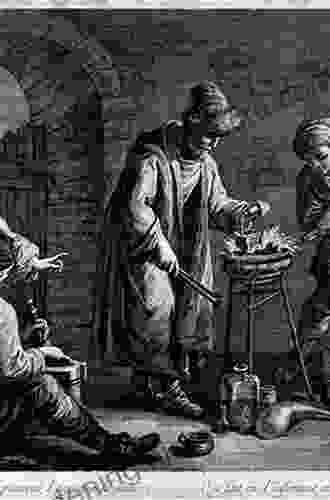
 Dillon Hayes
Dillon HayesThe Chemical Choir: Unveiling the Enchanting Symphony of...
In the enigmatic realm of science, where...

 Ryūnosuke Akutagawa
Ryūnosuke AkutagawaStumbling Thru: Hike Your Own Hike
In the realm of outdoor adventures,...

 Terry Pratchett
Terry PratchettUnlock Your Math Skills: A Comprehensive Guide to Chenier...
Math plays a vital role in...
5 out of 5
| Language | : | English |
| File size | : | 16669 KB |
| Text-to-Speech | : | Enabled |
| Screen Reader | : | Supported |
| Enhanced typesetting | : | Enabled |
| Print length | : | 200 pages |













